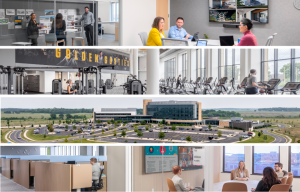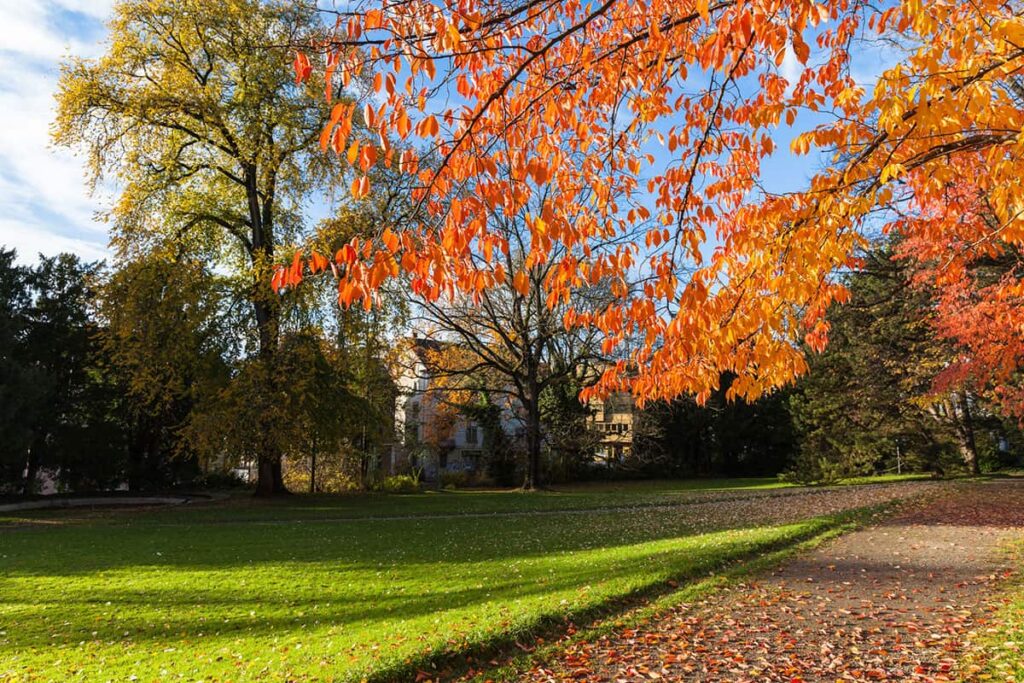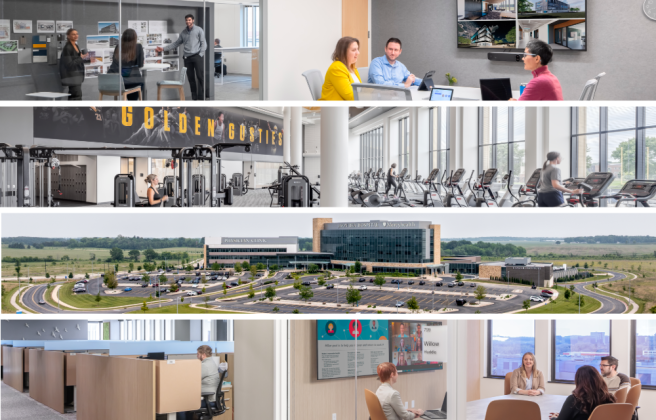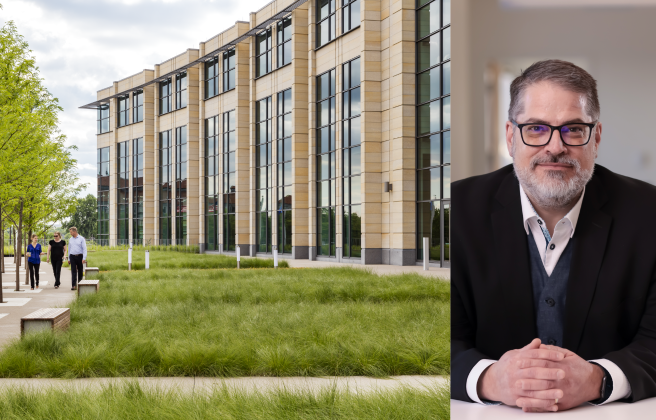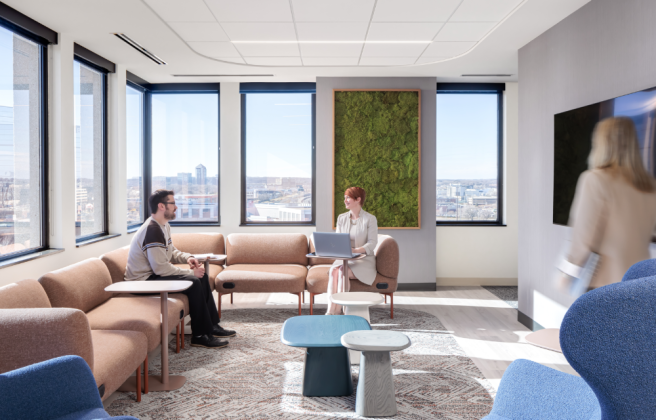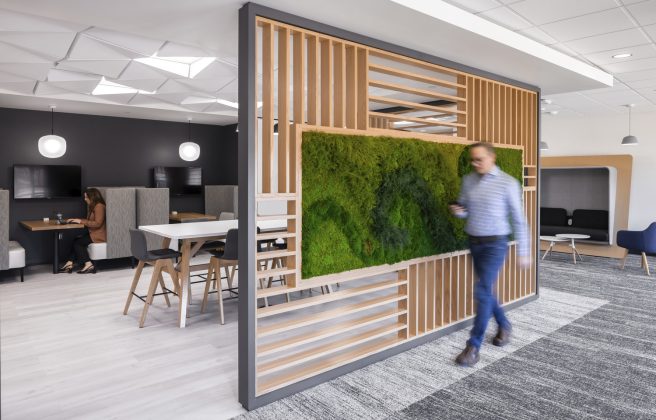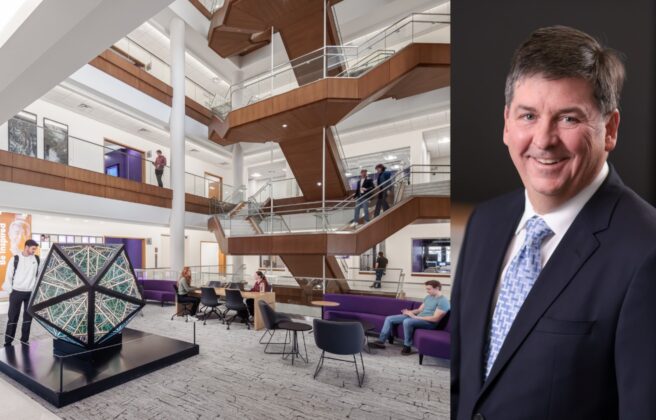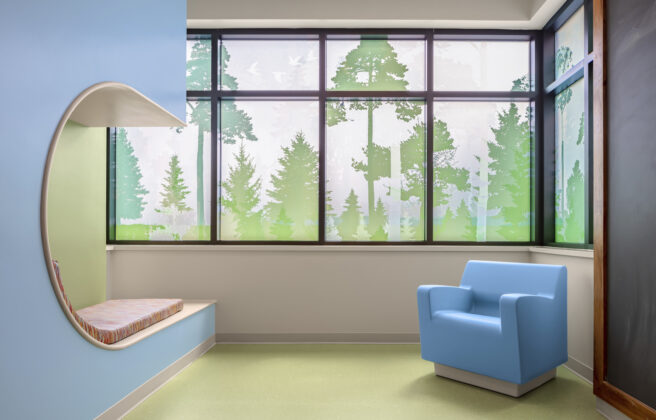Walking through the neighborhood the other afternoon, there was a feeling in the air…the crisp temperature, the changing color of the leaves, the rustle of the trees. And the light! Moving from warm orange to shades of tangerine and coral to fuscia and then a light pink, the light created this all-encompassing experience in which it felt good to be alive.
If only we could bottle up that outdoor feeling and bring it inside.
Or, can we?
While designers have always strived to create feeling in a space through color, furnishings, art, and, yes, lighting, what our eyes have seen in creating experience has been what is illuminated. What many times we have overlooked is what is illuminating. Light, it appears, is still a frontier we have not fully explored.
It seems an odd statement to write given the discussions about daylighting strategies and circadian rhythms that are hot topics. However, a recent retreat on a fall day in northern Wisconsin opened our eyes to possibilities that we had not seen in the past.
Hosted by Visa Lighting out of Milwaukee, the unique retreat pulled together a dynamic mix of lighting designers, architects, interior designers, and electrical engineers with the company’s own engineers and designers to discuss lighting in behavioral health. Long interested in how we leverage design to improve treatment and outcomes for patients in mental health facilities, we went in with eyes wide open to learn what people were doing.
To say the least, we came away understanding there is so much more we can do, and it begins by asking “What if?” with others who can make possible a reality. What if we saw lighting in institutions as more than institutional? What if we see comfort in the realm of control? What if safe lighting had design aesthetics? What if a wall became light that changed? What if lighting could encourage a patient’s self-expression?
What if we see lighting beyond shades of white?
What was most refreshing about the discussion was the lack of preconceptions in asking the questions. There were no parameters. There was no judgement. There were no obstacles. For the questions we might have had in the electrical function about a light, an engineer could provide an answer. If someone was curious about how patients react to certain elements, a medical planner was there to respond. If we wondered how a design could be manufactured…you get the picture.
And maybe that is what we found most energizing. Obviously, the motivations for Visa Lighting to pull together this group was different than the motivation for a clinician to participate, or a designer, or an engineer. Those differences aside, though, our interests were completely aligned – to help patients experiencing a mental illness find better environments in which to receive care. Reaching out to the community in a trusting manner, Visa Lighting created an intensely powerful, thoughtful and creative conversation that will yield a significantly different patient experience in the future.
Walking down the street that autumn day, the light was more than a background element shaping the experience. It was integral influencing our mood and health. There are no reasons lighting should be less integral when we walk indoors. For the patients who suffer from mental illness, they need us – designers, providers, engineers, manufacturers – to see light as more than the opposite of dark.

